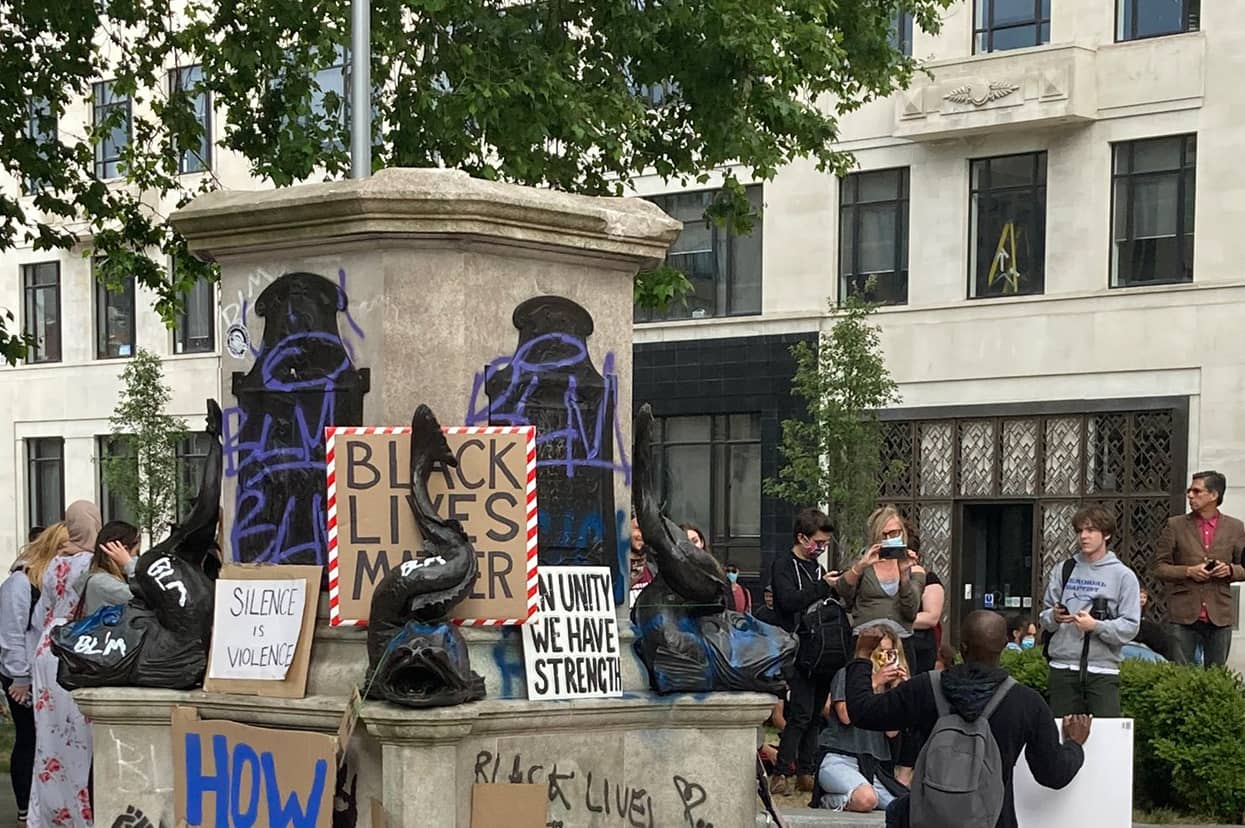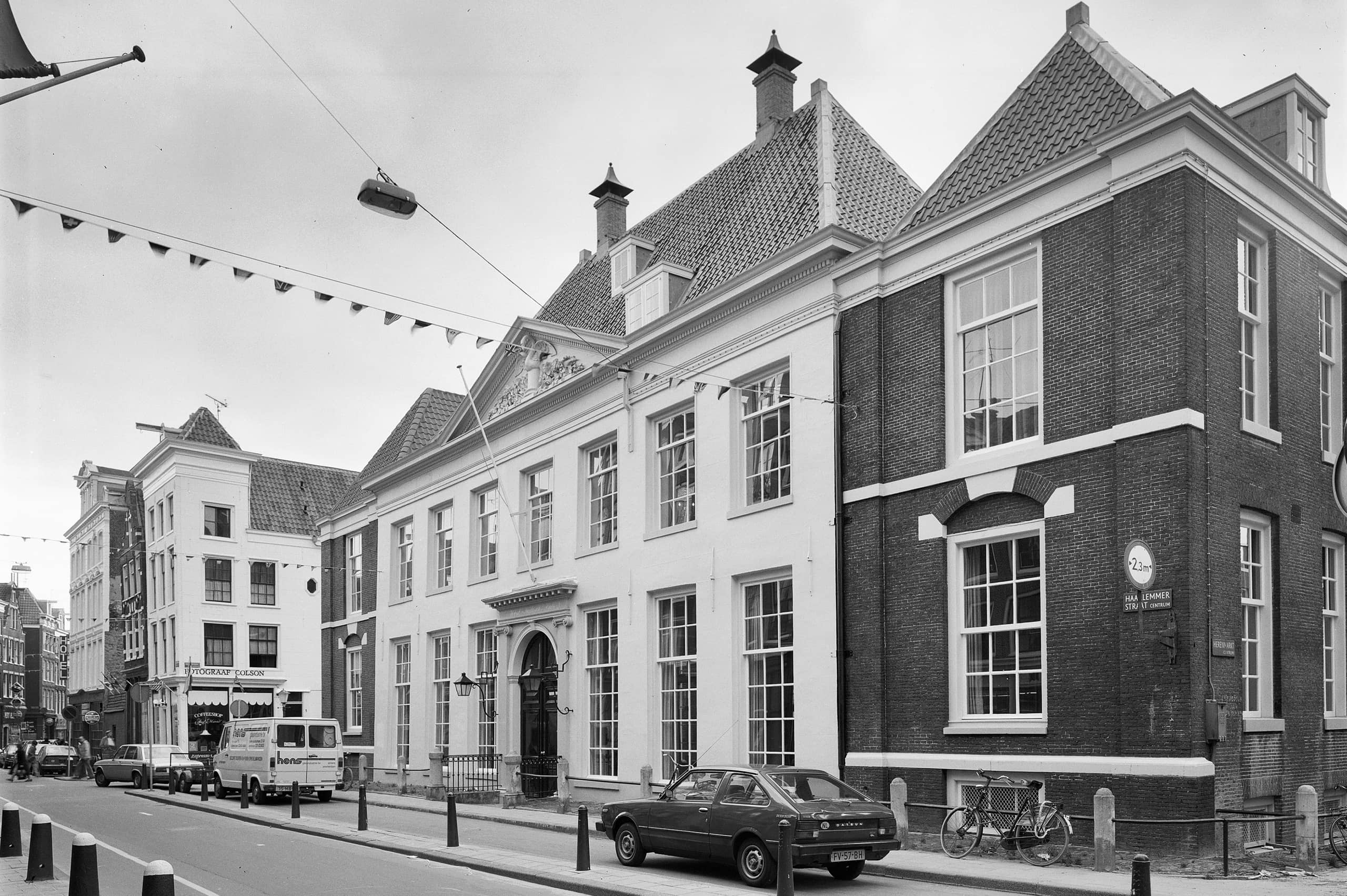Self-reflection remains a crucial task. During her six-month internship at the Cultural Heritage Agency (RCE), Masja Bentzen Wischmann contributed to the ongoing research project “Multiperspectivity and the National Monument List” (in Dutch: Rijksmonumentenlijst). How can we make the list more inclusive and multivocal, so that more people can recognise themselves in it? To help find answers to this question, she looked beyond the borders of The Netherlands to find alternative ways of dealing with national monuments and the stories they tell. In this blog, she writes about the results of her research.
The RCE recently started an exploratory research project that critically reflects on the National Monument List. Based on the idea that heritage can stimulate more connection, understanding and a feeling of recognition, this project explores how we can deal with the National Monument List in a multiperspective, inclusive and participatory way. This includes acknowledging the lack of certain heritages within the list with the goal of making it more inclusive and representative of Dutch society, as well as exploring how multilayered meanings, stories and knowledge can be added to existing listed monuments. My role in the project was to research international initiatives and projects that offer alternative approaches to monument designation and participatory management. It resulted in a long list with examples from across the world. Before presenting the results, I want to touch briefly upon the construction of listing and designation.
Image: Rijkdienst voor het Cultureel Erfgoed
Moluccan Church (Appingedam).
An untold story of heritage protection
In the 1960s, when monuments started to be designated in The Netherlands, the primary goal was to preserve historical fabric that was seen as “important”, based mainly on architectural, aesthetic, and age-related criteria (initially monuments had to be older than 1850 to qualify for designation). Throughout the years, the criteria for selection and valuation have changed. The complete criteria can be found on this webpage (in Dutch).
Several scholars have pointed out how heritage becomes “naturalised” within the logic of listing, obscuring the selective nature of the process (Ashworth 1997, Harrison 2013). Selections always lead to exclusions (whether conscious or unconscious). Listing monuments leads to “freezing” an object in time and establishing an allegedly all-encompassing and neutral interpretation, disregarding the fact that cultural heritage is a dynamic process characterised by constant change and contestation. Furthermore, “authenticity” remains an essential determinant of value in built heritage preservation and the test to pass for new designations on the list. However, from the user’s perspective, “authenticity” often lies in the experience rather than the object itself (Penrose 2020).
New conceptions of heritage emphasize values and ideas, rather than “authentic” fabric. More important than the structure, are the meanings and memories that individuals and communities attach to particular places and structures. How can these align with the practice of how the National Monument List is used today?
Multivocality and inclusivity in practice: international examples
From the research I conducted, I identified three general types of international initiatives, each dealing with multivocality, participation and inclusivity in different ways.
Transparency
There are multiple examples of national institutions offering greater transparency and accessibility for the public. One example is The Australian Heritage Council that has published “The Story So Far”, telling the story of their national listings and how they came to be. Other examples include Heritage New Zealand and The National Heritage Board of Singapore that have created databases with user-friendly interfaces, where places can be visually connected to specific stories and people.
A thematic approach
Both national and regional bodies are exploring how stories of marginalised communities and previously untold histories can be told. The National Park Service in the United States has created “National Register Features” that each month thematically highlights monuments, while the urban.brussels’ initiative on “Decolonising Public Spaces in the Brussels-Capital Region” and Parks Canada’s “Inclusive commemorations initiative” both revolve around engaging communities in order to engage with racist histories and structures.
Participatory databases
Finally, there are many examples of online databases where members of the public can edit and add content, offering ways to tell counter-histories and share personal meanings attributed to certain listed buildings. This includes initiatives such as Library and Archives Canada’s “Co-Lab”, Historic England’s ”Missing Pieces Project”, as well as The National Archives’ (USA) “Citizen Archivist”-database.
[Text continues below image]

The empty pedestal of the statue of Edward Colton (Bristol, UK). 
West-Indisch Huis (Amsterdam).
The future of the national monument list
Within a national framework, certain organisational structures present themselves as the way to do it. However, examining how other countries are engaging with their heritage management reveals how apparently “fixed” structures can be challenged in a multiplicity of ways.
My research of international initiatives has presented various strategies to engage with national monuments in more inclusive and participatory ways. While not all of these may be directly compatible or relevant to a Dutch context, these examples will hopefully inspire us to reflect on the National Monument List as a more multivocal and inclusive tool.
Works cited
- Ashworth, G.J. ‘Conservation as Preservation or as Heritage: Two Paradigms and Two Answers’. Built Environment (1978-) 23, no. 2 (1997): 92–102.
- Harrison, Rodney. ‘Some Definitions: Heritage, Modernity, Materiality’. In Heritage: Critical Approaches. Routledge, 2013.
- Penrose, Jan. ‘Authenticity, Authentication and Experiential Authenticity: Telling Stories in Museums’. Social & Cultural Geography 21, no. 9 (2020): 1245–67.
Blog written by Masja Bentzam Wischman.